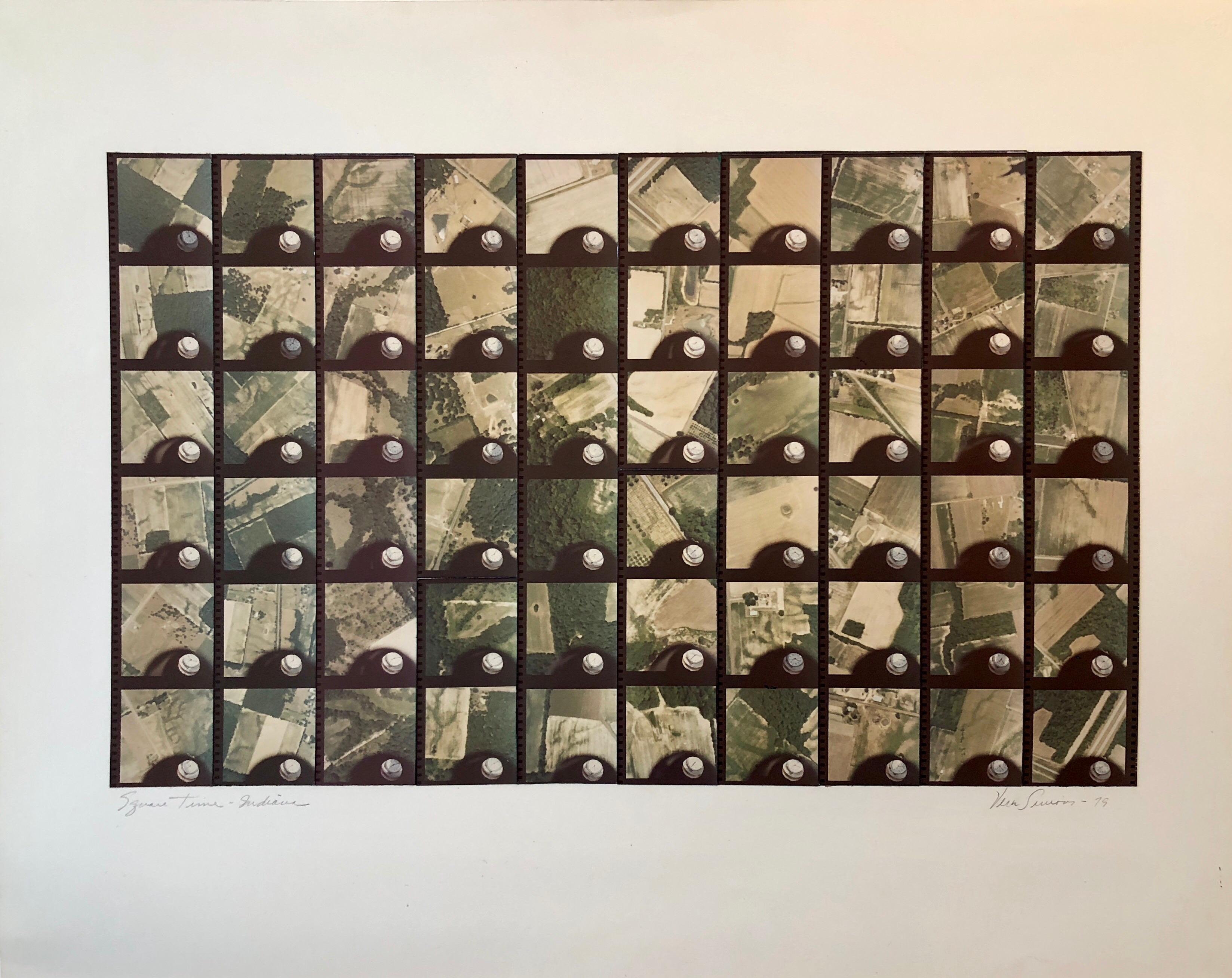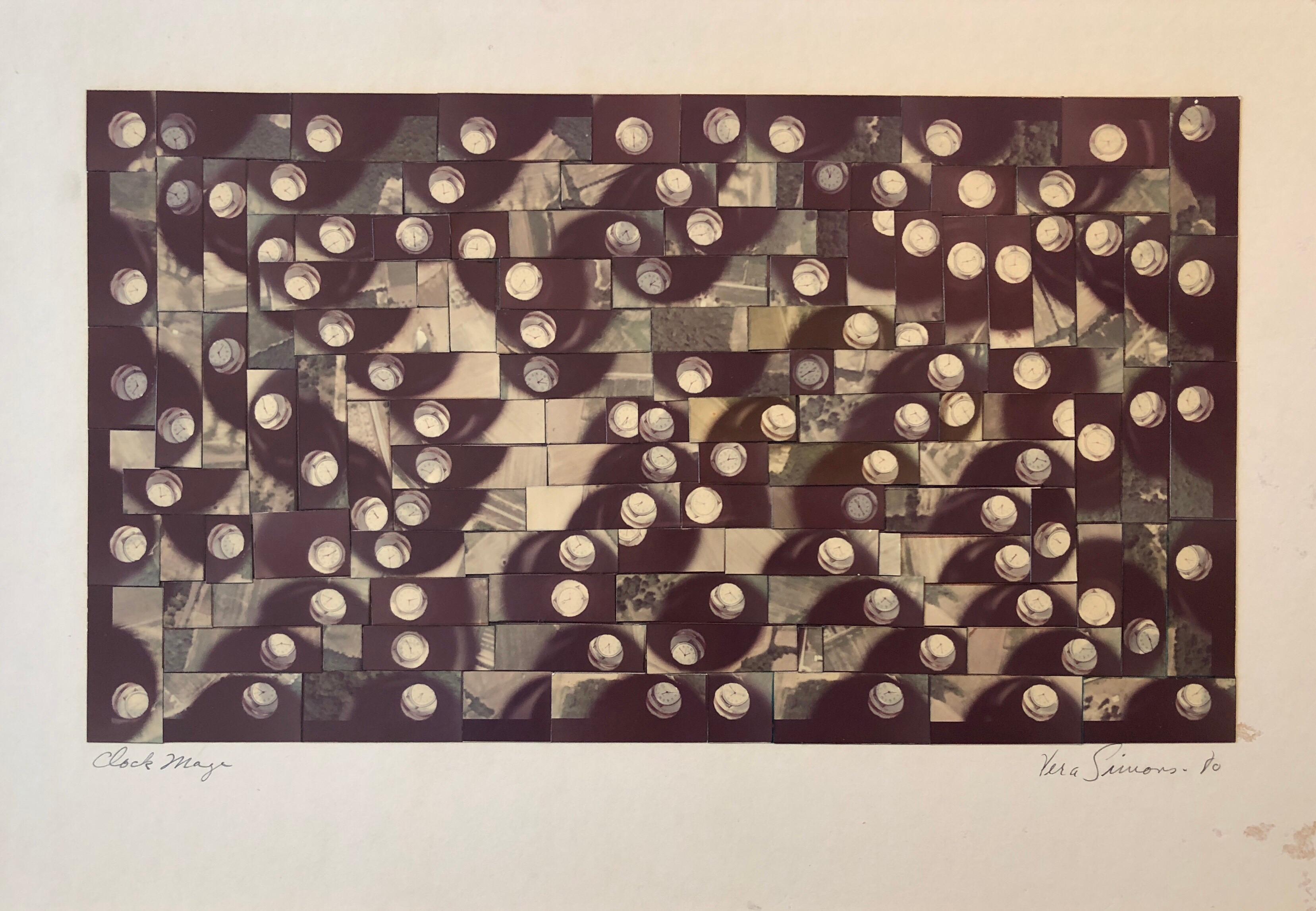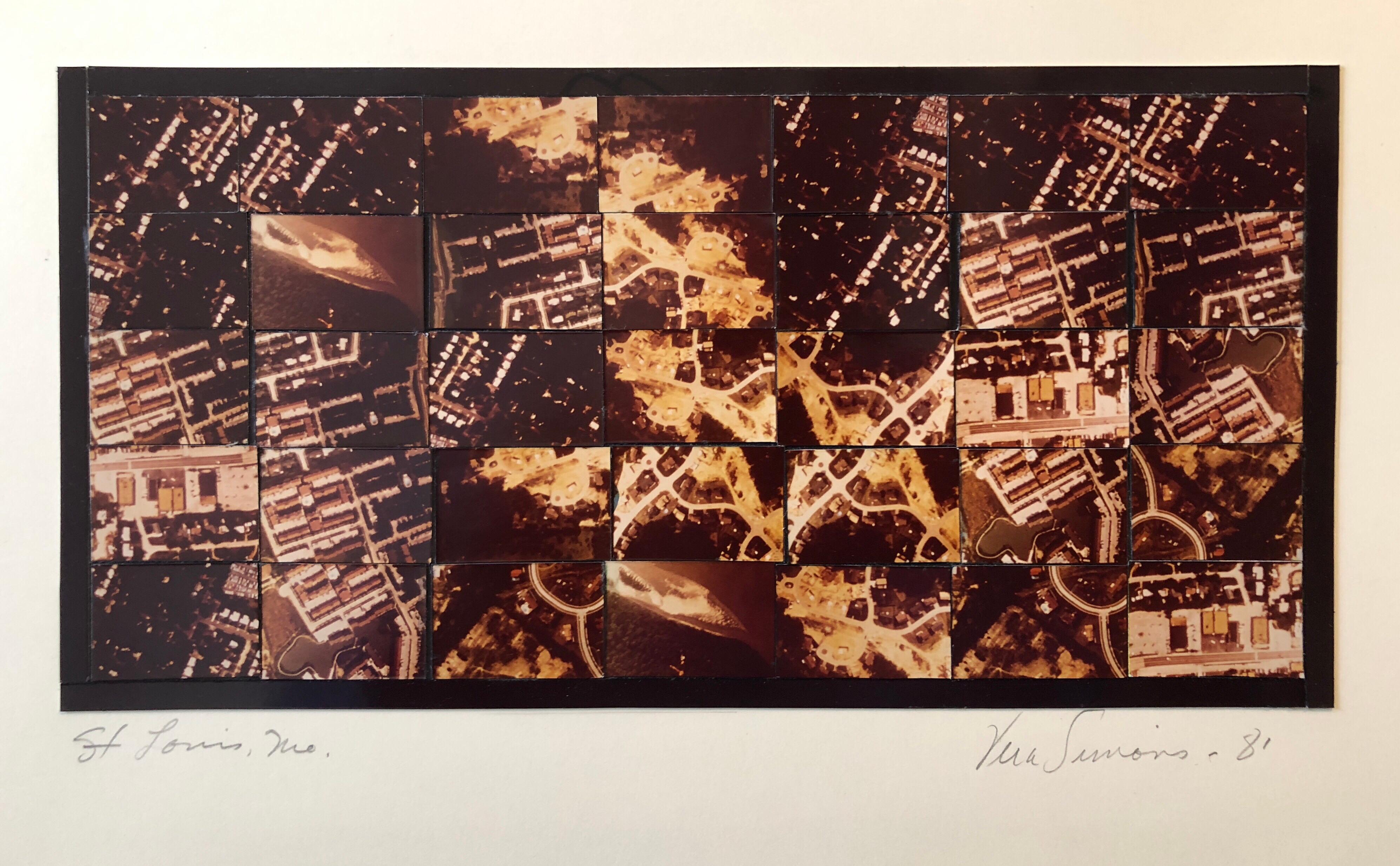Items Similar to Large Harry Bowers Vintage C Print Photograph From Ten Photographs Fashion Photo
Want more images or videos?
Request additional images or videos from the seller
1 of 11
Harry BowersLarge Harry Bowers Vintage C Print Photograph From Ten Photographs Fashion Photo1984
1984
About the Item
HARRY BOWERS
T E N P H O T O G R A P H S
I DON'T LOOK FOR PHOTOGRAPHS I INVENT THEM
I recall my first meeting with Harry Bowers in California a few years ago. As he produced his large-scale prints, I was at first flabbergasted, not only by their size, but by their seamless perfection. Technique appeared to be everything but then technique as technique simply vanished. After the first moment, technique was no longer an issue, but rather a passageway to the imagery.
Suffice it to say about Harry Bowers' working style that he is an obsessive man. Trained as an engineer, he has turned that discipline to art. His lenses, equipment and darkroom, much of it exactingly manufactured by himself to answer certain needs, serve the desire of the artist to take photographic technique to its ultimate perfection in invisibility and transparency. I respect obsession in art, and particularly in photography, because obsession in photography passes beyond the easy, middle ground of image making to a more demanding, more difficult, yet more rewarding end. Bowers' obsession is to eliminate "photography as technique." No grain, no decisive moments, no journalism, or, seemingly, direct autobiographical endeavors appear in his work.
Bowers is an artist of synthesis who controls his environment if only in the studio exactly to his liking. The images he creates are formal structures, saucy stories on occasion, which may offer hints of a darker, more frightening sexuality, but what you see is the end product of an experiment in which nothing save the original insight perhaps is left to chance.
We seem fascinated with the idea of replication of reality in art. Popular painting frequently reproduces a scene "with the accuracy of a photograph," and photographs may "make you feel as though you were right there." The very invisibility of the photographic medium is important to Bowers, in that it allows him to maneuver his subject matter without concern for rendering it in an obvious art medium which would interfere with the nature of the materials he uses. The formal subtleties of Bowers' recent work are as delicious and ambiguous in their interrelationships as the best Cubist collages, yet while those collages always suggest their parts through edge and texture, these photographs present a structure through a surface purity.
Bowers' earlier works, for example, the Skirts I Have Known series, were formed of bits of clothing belonging to Bowers and his wife or found at local thrift shops. These works fused an elegance of pattern and texture, reminiscent of Miriam Shapiro's or Lucas Samaras' fabric paintings, with a sense of theater and, on occasion, high eroticism. These clothes are not simply mashed like baled rags into the glass fronted box which fronts the picture plane, but are actors in a subtle dumb show. Early on, Bowers was surprised that so few people took notice of the erotic element in his work, for it forms a distinct and important component of his images, and one which he has continued to exploit, albeit in different ways.
In the last few years Bowers' work has divided into two parallel modes; one continues his fascination with patterns, textures and stuffs pressed into the transparent picture plane, while the other is more directly anthropomorphic. In this second body of work, Bowers frequently uses articulated shadow figures in black or white, carefully adjusted within the image in a provocative way that is often sexually unsettling. But for all their explicit arrangement, these works may be less suggestive than his earlier clothing tableaus. These newer works are more about space, texture, and the extensions of photography, as well as being a comment on sexuality.
Bowers has always been fascinated with space, and recognizing that it cannot be rendered on a flat surface through the camera, he has set about to create an illusion of space on a shallow plane, a true trompe l'oeil achievement. Within these works, the space is still constructed upon the glass panel of the printing frame, but with elements collaged to its front surface as well as pressed within it. The forms, frequently large black and white photographs (a photographer's conceit on the use of photography), often include a seated or crouching figure dressed only in socks and cutoff dungarees, which add an element of personality. The figure and the way in which it is posed also add a quality of vulnerability to his images, not heretofore seen.
One of the best of these images, HB-28-80, uses a photograph of a figure crouching in a fetal position on a chair. The figure has been cut from its background, and the background, in turn, has been taped to the front of the glass pane while the figure, in perfect register with the background, is laminated behind the glass. One of Bowers' articulated shadow figures, one hand trying to hide its genitals, has been placed on top of the figure, also under the plane of glass. The shadow figure follows the curve of the spine of the photographed figure. One cannot help but feel not only the nakedness and tense embarrassment of these two figures, one real and the other schematic, but the anomalous suggestion of a man carrying a fetus within his body.
Bowers' images extend their power in several ways. They are photographs, which are so pure in their technique as to be clear as water. They deal with precise replications of reality, but a reality which has been recontextualized into episodes of both formal and visceral ambiguity. The best of them are wonderful .. contrivances" -his word-and are as frightening in their psychological implications as they are elegant in their visual form.
Thomas H. Garver, Director Madison Art Center
"I follow fashion. I have closets literally full of clothes. I am a full-blown Comme des Garcons and Prada freak. I love clothes themselves as objects, and I also love the glossies – my love of fashion is how I discovered Wallpaper magazine."
- Creator:Harry Bowers (1938, American)
- Creation Year:1984
- Dimensions:Height: 20 in (50.8 cm)Width: 16 in (40.64 cm)
- Medium:
- Movement & Style:
- Period:
- Condition:
- Gallery Location:Surfside, FL
- Reference Number:1stDibs: LU38213969062
About the Seller
4.9
Platinum Seller
These expertly vetted sellers are 1stDibs' most experienced sellers and are rated highest by our customers.
Established in 1995
1stDibs seller since 2014
1,547 sales on 1stDibs
Typical response time: 1 hour
- ShippingRetrieving quote...Ships From: Surfside, FL
- Return PolicyA return for this item may be initiated within 3 days of delivery.
More From This SellerView All
- Large Harry Bowers Vintage C Print Photograph From Ten Photographs Fashion PhotoBy Harry BowersLocated in Surfside, FLHARRY BOWERS T E N P H O T O G R A P H S I DON'T LOOK FOR PHOTOGRAPHS I INVENT THEM I recall my first meeting with Harry Bowers in California a few years ago. As he produced his large-scale prints, I was at first flabbergasted, not only by their size, but by their seamless perfection. Technique appeared to be everything but then technique as technique simply vanished. After the first moment, technique was no longer an issue, but rather a passageway to the imagery. Suffice it to say about Harry Bowers' working style that he is an obsessive man. Trained as an engineer, he has turned that discipline to art. His lenses, equipment and darkroom, much of it exactingly manufactured by himself to answer certain needs, serve the desire of the artist to take photographic technique to its ultimate perfection in invisibility and transparency. I respect obsession in art, and particularly in photography, because obsession in photography passes beyond the easy, middle ground of image making to a more demanding, more difficult, yet more rewarding end. Bowers' obsession is to eliminate "photography as technique." No grain, no decisive moments, no journalism, or, seemingly, direct autobiographical endeavors appear in his work. Bowers is an artist of synthesis who controls his environment if only in the studio exactly to his liking. The images he creates are formal structures, saucy stories on occasion, which may offer hints of a darker, more frightening sexuality, but what you see is the end product of an experiment in which nothing save the original insight perhaps is left to chance. We seem fascinated with the idea of replication of reality in art. Popular painting frequently reproduces a scene "with the accuracy of a photograph," and photographs may "make you feel as though you were right there." The very invisibility of the photographic medium is important to Bowers, in that it allows him to maneuver his subject matter without concern for rendering it in an obvious art medium which would interfere with the nature of the materials he uses. The formal subtleties of Bowers' recent work are as delicious and ambiguous in their interrelationships as the best Cubist collages, yet while those collages always suggest their parts through edge and texture, these photographs present a structure through a surface purity. Bowers' earlier works, for example, the Skirts I Have Known series, were formed of bits of clothing belonging to Bowers and his wife or found at local thrift shops. These works fused an elegance of pattern and texture, reminiscent of Miriam Shapiro...Category
1980s Arte Povera Photography
MaterialsC Print, Photographic Paper
- 1979 Square Time Indiana, Photo Mosaic Collage Aerial Photograph, Female AviatorBy Vera SimonsLocated in Surfside, FLSIMONS, Vera (1920 - 2012) Vera Habrecht Simons, was a German/American aviation pioneer, aeronaut and photo collage artist. She played a very important role in balloon development a...Category
1970s Arte Povera Color Photography
MaterialsPhotographic Paper
- Large Harry Bowers Vintage C Print Photograph From Ten Photographs Fashion PhotoBy Harry BowersLocated in Surfside, FLHARRY BOWERS T E N P H O T O G R A P H S I DON'T LOOK FOR PHOTOGRAPHS I INVENT THEM I recall my first meeting with Harry Bowers in California a few years ago. As he produced his large-scale prints, I was at first flabbergasted, not only by their size, but by their seamless perfection. Technique appeared to be everything but then technique as technique simply vanished. After the first moment, technique was no longer an issue, but rather a passageway to the imagery. Suffice it to say about Harry Bowers' working style that he is an obsessive man. Trained as an engineer, he has turned that discipline to art. His lenses, equipment and darkroom, much of it exactingly manufactured by himself to answer certain needs, serve the desire of the artist to take photographic technique to its ultimate perfection in invisibility and transparency. I respect obsession in art, and particularly in photography, because obsession in photography passes beyond the easy, middle ground of image making to a more demanding, more difficult, yet more rewarding end. Bowers' obsession is to eliminate "photography as technique." No grain, no decisive moments, no journalism, or, seemingly, direct autobiographical endeavors appear in his work. Bowers is an artist of synthesis who controls his environment if only in the studio exactly to his liking. The images he creates are formal structures, saucy stories on occasion, which may offer hints of a darker, more frightening sexuality, but what you see is the end product of an experiment in which nothing save the original insight perhaps is left to chance. We seem fascinated with the idea of replication of reality in art. Popular painting frequently reproduces a scene "with the accuracy of a photograph," and photographs may "make you feel as though you were right there." The very invisibility of the photographic medium is important to Bowers, in that it allows him to maneuver his subject matter without concern for rendering it in an obvious art medium which would interfere with the nature of the materials he uses. The formal subtleties of Bowers' recent work are as delicious and ambiguous in their interrelationships as the best Cubist collages, yet while those collages always suggest their parts through edge and texture, these photographs present a structure through a surface purity. Bowers' earlier works, for example, the Skirts I Have Known series, were formed of bits of clothing belonging to Bowers and his wife or found at local thrift shops. These works fused an elegance of pattern and texture, reminiscent of Miriam Shapiro...Category
1980s Arte Povera Photography
MaterialsPhotographic Paper
- Clock Maze, Wrist Watch, Photo Mosaic Collage Aerial Photograph, Female AviatorBy Vera SimonsLocated in Surfside, FLThis one depicts a sports wristwatch over an aerial landscape and is titled Clock Maze (it should be Watch Maze) SIMONS, Vera (1920 - 2012) Vera Habrecht Simons, was a German/Americ...Category
1970s Arte Povera Color Photography
MaterialsPhotographic Paper
- St Louis MO Photo Mosaic Collage Aerial Photograph, Female Aviator Feminist ArtBy Vera SimonsLocated in Surfside, FLThis one depicts an aerial landscape view of Saint Louis Missouri and is titled St. Louis, Mo SIMONS, Vera (1920 - 2012) Vera Habrecht Simons, was a German/American aviation pionee...Category
1980s Arte Povera Color Photography
MaterialsPhotographic Paper
- MIxed Media Collage Assemblage Abstract Expressionist Painting Female AviatorBy Vera SimonsLocated in Surfside, FLThis is an Abstract Expressionist torn and folded paper painted collage. The paper is metallised through some process. they are very luminous and beautiful. it is mounted on heavy ...Category
1970s Arte Povera Abstract Paintings
MaterialsPaint, Mixed Media, Laid Paper
You May Also Like
- SpanishLocated in New York, NYLambda digital-c print on Ilford Ilfoflex Archival Super Gloss. Signed, dated, titled, and numbered 2/2 on verso. Artist Andrew George is based in Los Angeles. He recently premiere...Category
Early 2000s Abstract Color Photography
MaterialsPhotographic Film, Photographic Paper, C Print, Color, Lambda
- Eric's WindowLocated in New York, NYFrom the series "Light Leaks" (2008) Type-c print on Ilford Ilfoflex Archival Super Gloss, 2008. Signed, dated, titled, and numbered 2/2 on verso. Artist Andrew George is based in L...Category
Early 2000s Abstract Color Photography
MaterialsPhotographic Film, Photographic Paper, C Print, Color, Lambda
- Piet 2Located in New York, NYLambda digital-c print on Ilford Ilfoflex Archival Super Gloss. Signed, dated, titled, and numbered 1/2 on verso. Artist Andrew George is based in Los Angeles. He recently premiered his latest series of photographic murals entitled Analogies & Metaphors in New York City. Andrew’s work has been in 20 international exhibitions, most recently in Japan and Korea (where accompanying books of his work were published) and Germany. Andrew’s internationally acclaimed photography and interview project, Right, before I die, traveled abroad 7 times and attracted more than half a million visitors at its various venues. Andrew has won numerous awards for his photography and has appeared in The Huffington Post, Vanity Fair, CBS News...Category
Early 2000s Abstract Color Photography
MaterialsPhotographic Film, Photographic Paper, C Print, Color, Lambda
- TivoliLocated in New York, NYType-c print on Ilford Ilfoflex Archival Super Gloss, 2003. Signed, dated, titled, and numbered 1/2 on verso. In the series ‘Weights & Measures’ (2003) Andrew George turns his lens ...Category
Early 2000s Abstract Color Photography
MaterialsPhotographic Film, Photographic Paper, C Print, Color, Lambda
- Maple DriveLocated in New York, NYLambda digital-c print on Ilford Ilfoflex Archival Super Gloss. Signed, dated, titled, and numbered 1/2 on verso. Artist Andrew George is based in Los Angeles. He recently premiere...Category
Early 2000s Abstract Color Photography
MaterialsPhotographic Film, Photographic Paper, C Print, Color, Lambda
- JetsamLocated in New York, NYLambda digital c print on Ilford Ilfoflex Archival Super Gloss, 2003. Signed, dated, titled, and numbered 2/2 on verso. Artist Andrew George is based in Los Angeles. He recently pr...Category
Early 2000s Abstract Color Photography
MaterialsPhotographic Film, Photographic Paper, C Print, Color, Lambda





